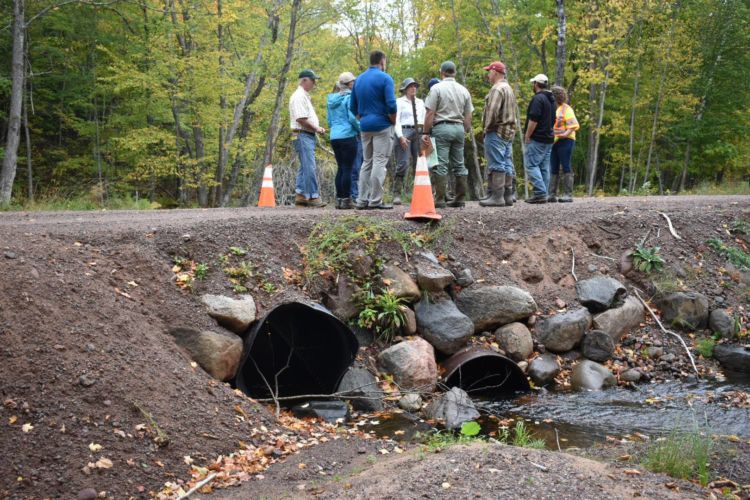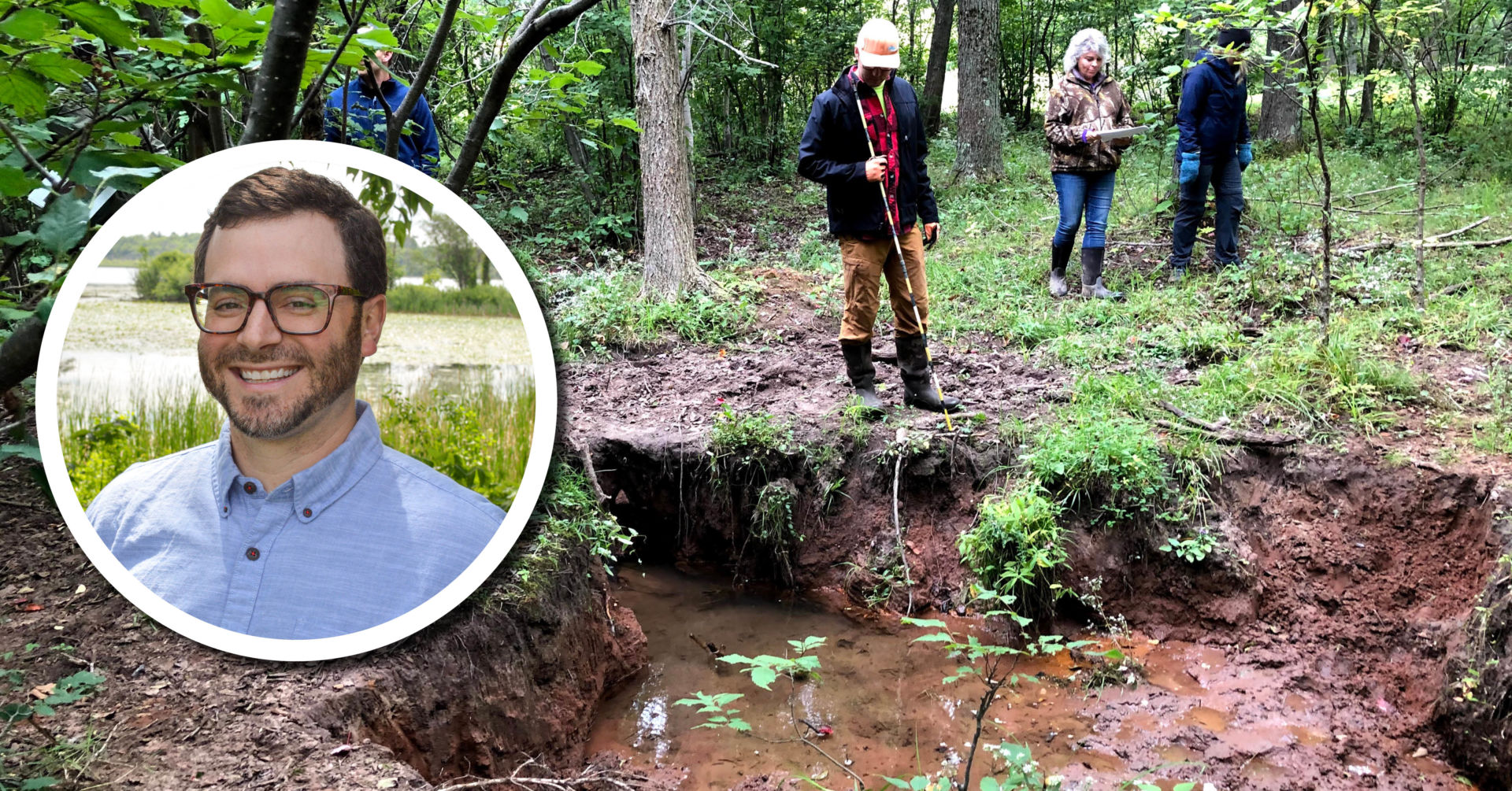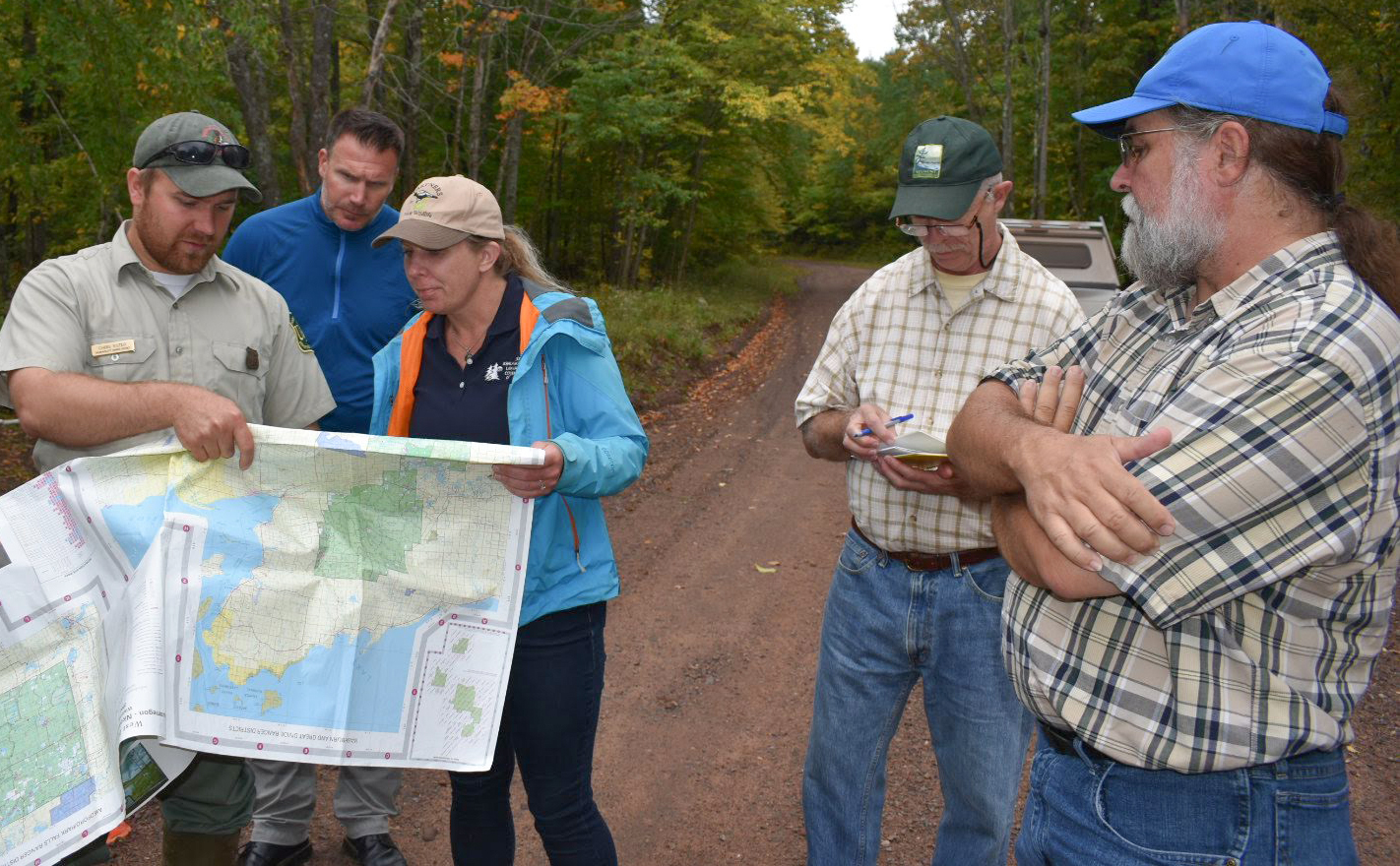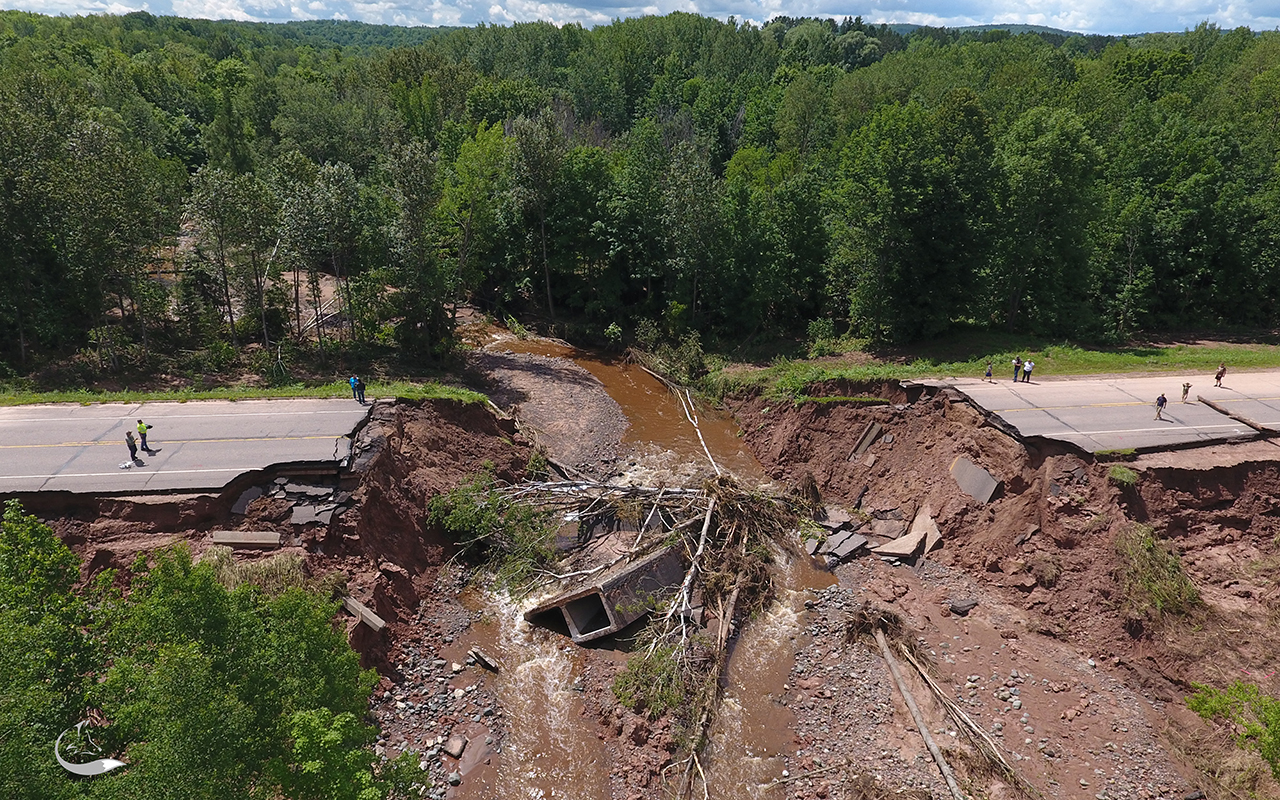Since the 2020 launch of the FEMA Pre-disaster Hazard Mitigation Grant, Rebuilding Natural Infrastructure in Ashland County, collaborators have been examining the root causes of flood damages to roads, bridges, and culverts in the highly vulnerable Marengo River Watershed. This is Wisconsin’s first FEMA-funded assessment explicitly focused on nature-based solutions for infrastructure challenges.
In recent years, Ashland County has experienced 100-, 500-, and 1,000- year storm events that have posed significant flooding challenges to public infrastructure.
This week, the Ashland County Board of Supervisors approved a Hazard Mitigation Plan addendum called, A Strategy for Natural Flood Management and Climate Resilient Infrastructure in Ashland County. Ashland County’s official adoption of these strategies recognizes the benefits of restoring wetlands, floodplains, and streams to reduce flood risks and protect vulnerable infrastructure.
Ashland County Administrator Dan Grady noted the importance of considering how the natural landscape can alleviate flooding challenges. “Repetitive flood damages create public safety, administrative and economic challenges for local governments. This addendum expands our understanding where flooding is posing problems at road crossings and how restoring natural infrastructure can alleviate these flooding challenges in a cost-effective way.”
The addendum can be accessed by visiting https://co.ashland.wi.us and searching “Hazard Mitigation Plan.” The addendum includes:
- Identification of flood vulnerability factors and results from evaluating erosion hazards and degraded hydrology upstream of road crossings.
- Goals and strategies for mitigating erosion hazards with natural flood management practices.
The Wisconsin Division of Emergency Management (WEM) was influential in recommending this project for FEMA funding. According to WEM Bureau of Policy and Grants Director Katie Sommers, “This project highlights the connection between healthy wetlands and streams for storage, slowing flows, and ultimately reducing flood risks. Projects like this help build the case for investing in nature-based solutions for flood mitigation.”
Kyle Magyera, Local Government Outreach Specialist with the Wisconsin Wetlands Association who served as Project Manager, said the steps followed in this work set an example for other communities. Although this project is wrapping up, Magyera says collaborators are continuing to work on tools that will help local governments implement natural flood management strategies.
Project collaborators in Rebuilding Natural Infrastructure in Ashland County included Ashland County, the Wisconsin Wetlands Association, U.S. Geological Survey, the Northwest Regional Planning Commission, Wisconsin Division of Emergency Management, Wisconsin Department of Natural Resources, The Northwest Regional office of the Wisconsin Department of Transportation, and many local townships.
For more information, contact Kyle Magyera at kyle.magyera@wisconsinwetlands.org or (608) 575-3702.
Related content
Wetland Coffee Break: Piloting natural flood management in the Lake Superior basin
Learn more about this project by viewing Kyle Magyera’s Wetland Coffee Break presentation.
Laying the foundation for wetlands as effective solutions
Making a case for wetlands




